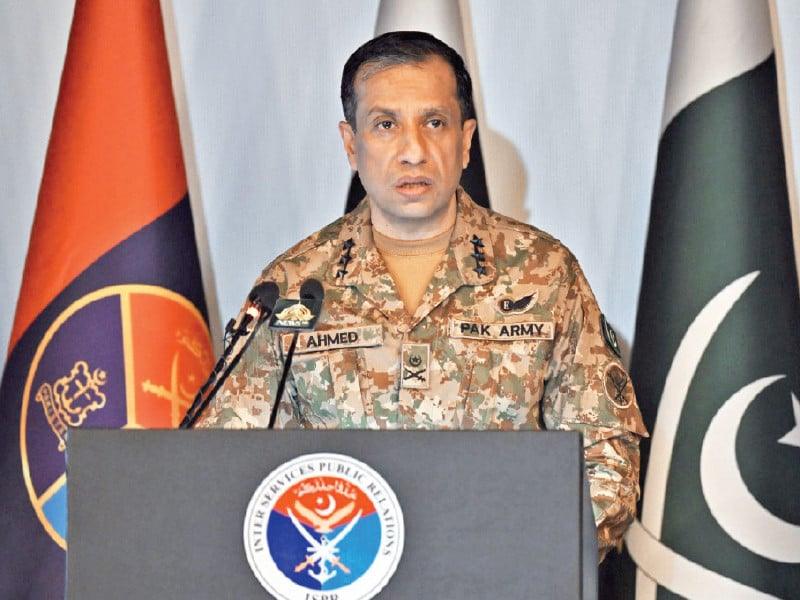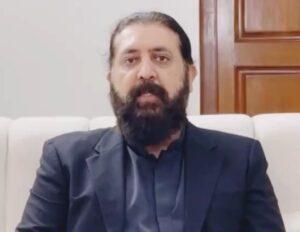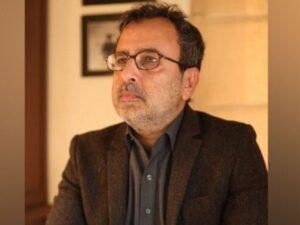During a press conference on Sunday, the director general of inter-service public relations (ISPR), the lieutenant-general, Ahmed Sharif Chaudhry, described “ Operation Bunyan-Un-Maoos of Pakistan ” against India as a complete national response to Indian aggression, declaring that the armed forces had held all the promises made to the country.
“Operation Bunyan-Un-Marsoos was an excellent example of the gathering of all the elements of national power,” he said. “With the overwhelming support of the Pakistani public, we actually have a direct threat to our national sovereignty, our integrity and our great homeland,” he added.
Lieutenant-General Chaudhry reiterated that the Pakistani armed forces had made three clear commitments at the start of the conflict: “We will give an appropriate response to the Indian aggression. This answer will be at the same time – it will not be something that you will need our own Indian media.
He stressed that it was not only declarations of intention but objectives that were fully achieved. “This is what we promised. We have promised and delivered. “
He presented an overview of “Operation Bunyan-Un-Marsoos” launched in retaliation for what he called “ignoble attacks” led by Indian forces in the night of May 6 and 7, providing a full report of the military response of Pakistan to what he described as “unreal Indian aggression”.
“These attacks have led to the tragic loss of innocent civil life, including women, children and the elderly,” he said. “Pakistan had judged justice and compensation for the reprehensible Indian military assault and the brutal murder of our civilians,” he added.
Stressing the military response, the CEO informed that the Armed Forces of Pakistan targeted 26 military installations in India which would have been involved in attacks on civilians and Pakistani infrastructure.
“These are in particular the installations of the Indian Air Force and the army in Suratgarh, Sirsa, Adampur, Bhuj, Naliya, Bathinda, Barnala, Harwara, Avantipur, Srinagar, Jammu, Mamoon, Ambala, Udhampur and Pathankot-which all underwent significant damage,” he said. He added that the missile installations used to launch Brahmos missiles on Pakistani territory have also been neutralized.
Describing Pakistan’s response as a “manual demonstration” of joint military operations, he underlined the integration of the three military branches and advanced technologies. “It was made in place by the awareness of the situation in real time, the war capacities centered on the network and transparent multi-domain operations,” he said.
He also underlined the use of a wide range of modern weapons, including the long -term range guided by precision Fatah Missiles (F1 and F2), precision ammunition launched in the air, long -range wool ammunition and advanced artillery systems.
Reinforcing the conduct of Pakistan during the operation, the military spokesperson firmly said that the armed forces did not target civilian populations. “We will never target civilians,” he said. “Our religion, our culture and our professionalism do not allow us to do so.” He added: “Even from Indian declarations, have you found that Pakistan had attacked something other than military targets?”.
Read: Trump to work with Pakistan, India to solve the cashmere dispute
The CEO ISPR also said that Pakistan’s military reprisals were not only proportionate and deliberate, but also designed to maintain the country’s strategic deterrence posture. “No one should have any doubt,” he warned, “that our sovereignty is threatened each time and our territorial integrity raped, the response will be complete, compensating and decisive,” he said.
He revealed new aspects of Pakistan’s military strategy during “Bunyan-Un-Marsos operation” against India, highlighting the use of drones, cyber capacities by the country and operations to combat simultaneous terrorism.
The briefing underlined the growing technological sophistication of the Pakistani army and its preparation to engage in several areas in response to the evolution of regional threats. “India has deployed drones not only for surveillance, but to intimidate civilians by distributing fear,” he said.
In response, he said, Pakistan has demonstrated its own advanced drone capacities. “Throughout the” Bunyan-Un-Marso Operation “, dozens of Pakistani armed drones flew over major Indian cities and high-value political and government sites, including the capital, New Delhi,” he revealed.
He said that this maneuver was a deliberate force of force. “From cashmere occupied in Gujarat, we have clearly indicated that Pakistan has deadly, long -range and unmanned capacity, stressing the futility of trying to dominate this area.”
Read also: The Indian attack on the base of Nur Khan caused us an intervention: Nyt
The CEO ISPR also revealed that Pakistan had launched a “complete and effective cyber-offensive” which temporarily disrupted the critical Indian infrastructure and communication networks. These systems, he said, actively supported the military operations of India during the conflict.
“Let me tell you that the Pakistani armed forces have an adequate suite of highly sophisticated niche technology technologies. What we used in this conflict was only a fraction of our capacities-many remain not disclosed, reserved for future eventualities,” he said.
Despite the show by force, Lieutenant-General Chaudhry insisted that the actions of Pakistan were measured. “Compared to the implacable provocations of India, our response was precise, proportionate and remarkably retained,” he said. He said Pakistan avoided civilian victims and strictly targeted entities directly linked to hostile military actions against Pakistan.
During the press briefing, he also underlined a simultaneous increase in militant violence across Pakistan. “While our forces were committed to the eastern front, we attended an abnormal and immediate peak in terrorism sponsored by India within our borders,” he said. “This clearly justifies Pakistan’s long -standing position according to which India is actively involved in fog terrorism here.”
Despite these challenges, he said that the Pakistan soldiers maintained operational efficiency on both fronts. “In addition to” Bunyan-a-Marsoos operation “, our forces continued operations against uninterrupted terrorism in the West region, guaranteeing national security on all fronts.”
Find out more: Pakistan observes “Youm-E-Tashakur” to celebrate the success of “Operation Bunyan-Un-Marsoos”
Counting tribute to those who lost their lives, Lieutenant-General Chaudhry made prayers for the rapid recovery of the wounded and congratulated the efforts of the armed forces of Pakistan. “We express our sincere gratitude to each officer, soldier, aviator and sailor of the armed forces of Pakistan who made this success possible on the battlefield thanks to their courage, their professionalism and their sacrifice,” he said.
He praised the resilience of the Pakistani people during the crisis, saying: “The moral force, the unity and the prayers of the nation were a multiplier of force for our armed forces.”
In particular, he applauded the youth of Pakistan, whom he described as “front-line soldiers” in information and cyber-domains, counter-informing and defending national online interests. He also thanked the Pakistani media for acting as a “steel wall” against hostile stories.
Recognizing the role of civil leadership, he congratulated the country’s politicians for their support and congratulated Prime Minister Shehbaz Sharif for having made “changing decisions” during the conflict.
Earlier on Saturday, India made air strikes on three bases of Pakistan Air Force (PAF) – Nur Khan, Murid and Shorkot. In response, Pakistan launched a military reprisals operation called “Bunyan-Un-Marsos” against Indian assault. Following the intervention of US President Donald Trump to defuse tensions between the two nuclear weapons, a cease-fire was reached.




